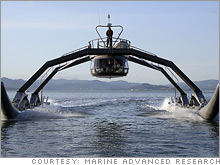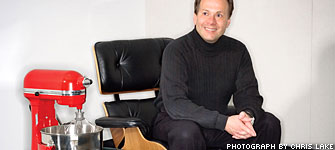Chances are you’ve never heard of
Nottingham-Spirk, the industrial-design firm whose creations include the Crest SpinBrush, the Dirt Devil vacuum cleaner and the ever-popular Sherwin-Williams twist-and-pour paint can, reports Anne Fischer in
Fortune (6/11/07). In fact, over the past 30 years, Nottingham-Spirk has “patented 464 products, with combined sales of more than $30 billion.” What’s their secret? Craig Saunders, who has been with the firm for 24 years, “says he’s gotten the most useful insights from focus groups by asking them what makes them mad.” That’s how Nottingham-Spirk came up with the
SwifferVac, for instance. People said they “loved the Swiffer mop” but were frustrated by its inability to clean up anything other than dust.
 is designed and manufactured in Sydney Australia. The unique blend of flexible and semi-flexible polymers created a wallet that is durable, stylish, and packed with clever features for modern lifestyles. The patented design consists of purpose designed areas for storage of credit cards, notes, and coins.
is designed and manufactured in Sydney Australia. The unique blend of flexible and semi-flexible polymers created a wallet that is durable, stylish, and packed with clever features for modern lifestyles. The patented design consists of purpose designed areas for storage of credit cards, notes, and coins.

















 Blocks. Usually, it is an area of screen with a border, a header and a footer, to aggregate logically connected elements: links, text, a score card, an article preview.
Blocks. Usually, it is an area of screen with a border, a header and a footer, to aggregate logically connected elements: links, text, a score card, an article preview. 



 a lot of people are spending a lot of time these days trying to get all clairvoyant on us. Trying to predict whether advertising will zig or zag.
a lot of people are spending a lot of time these days trying to get all clairvoyant on us. Trying to predict whether advertising will zig or zag. 





 When information needs to be communicated, Edward Tufte
When information needs to be communicated, Edward Tufte 




 frog design's Senior VP of Creative, Mark Rolston, talks about the
frog design's Senior VP of Creative, Mark Rolston, talks about the